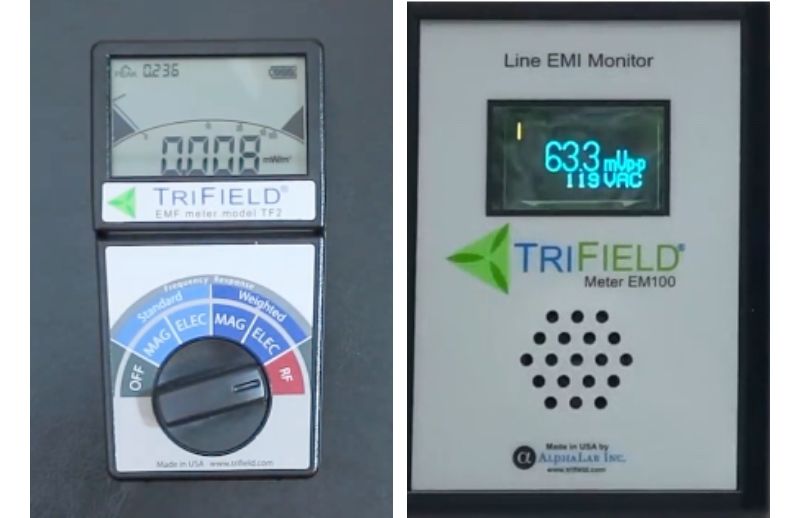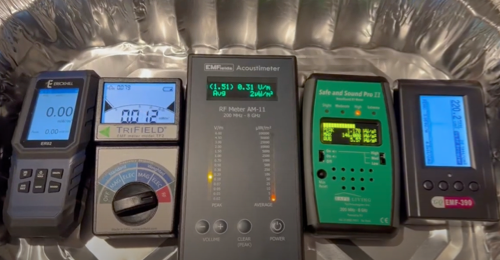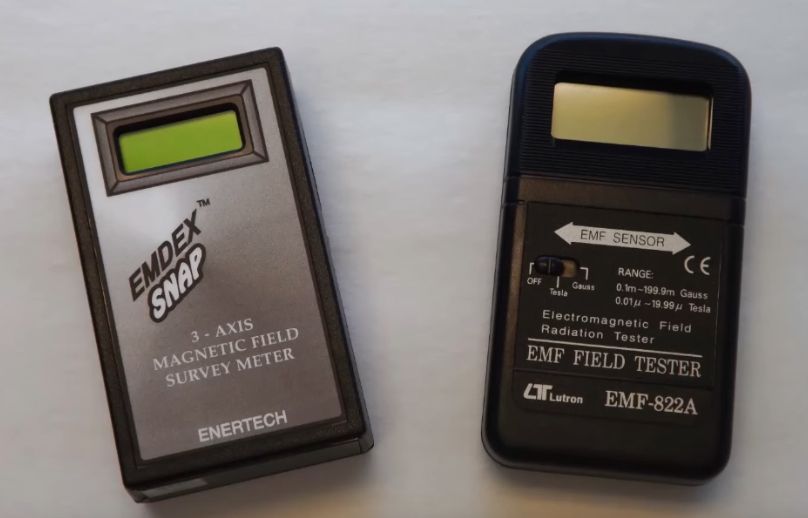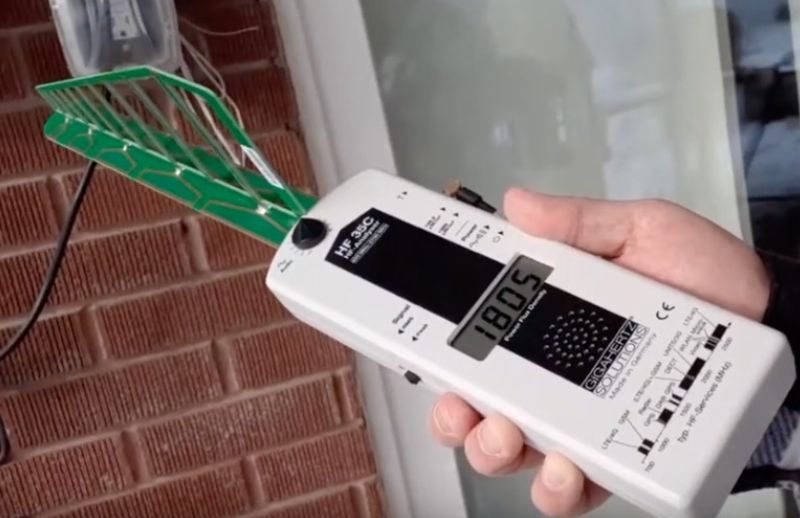I like the size of the Trifield TF2 EMF meter, it sits nicely in my hand and there aren’t external antenna’s or anything protruding. It feels nice and solid and high quality when you shake it there isn’t a rattle.
It’s very simple to use because there aren’t a lot of buttons. Just a dial you have to turn for the type of EMF you are measuring.
Categories of EMFs It Can Measure
- Magnetic fields
- Electric fields
- Radio frequency signals
These are the electric fields on the EMF spectrum.
For magnetic fields and electric fields it has two different options for standard readings and weighted readings. These are just different ways of calculating the readings.
Sources of EMFs It Can Measure
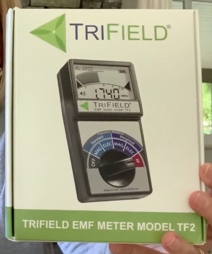
With the Trifield TF2 on electric and magnetic field mode you can measure EMFs from things like your electrical wiring and from your fuse box.
You can measure EMFs from electrical appliances in your kitchen, living room, bathroom and all around your home.
You can measure EMFs from overhead power lines and from transforming units.
If you have it set to radio frequency mode that you can measure radio frequency from things like cell phone, cell towers, WIFI, Bluetooth, smart meters, microwave ovens, FM radio towers etc. Click here to find the best price on this meter.
How To Use The Trifield TF2
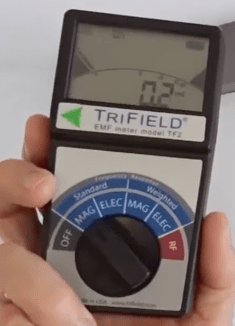
Move the selector switch to “MAG” to measure the magnetic fields and the LCD display comes to life, the big digits at the bottom tells you the measurement reading which is shown in mG.
Above that is a bar graph which gives you the same reading in a bar form on a scale of 0 to 100.
On the top left you have the peak measurement unit this captures the highest peak being measured and holds it for 3 seconds. The icon on the bottom left tells you have the audio function switched on or off. Top right displays the battery level indicator.
Electrical Fields
If you move the selector switch to “ELEC” it will measure electrical fields and the big digits on the bottom now tell you the current field measurement for electric fields and it gives a reading W/m now, which means volts per meter.
Weighted Mode
If I move the switch into the dark blue area then you are on the weighted mode setting for magnetic fields or electric fields. This makes the meter more sensitive at frequencies higher than 60 hertz as oppose to the standard mode which measures the fields using a flat frequency response.
Radio Frequencies
If you move the selector switch to the far right where it says “RF” then you are now measuring radio frequency microwave radiation. The big digits at the bottom give a reading in mW/m2 which means milliwatts per square meter.
3 Things You Need To Know
- It has really good magnetic field functionality for the money.
- It has a back light and audio function that you can access by taking off the back cover and there’s two little red buttons on there. The top one is for the light and there are three settings and the bottom button is for the sound function. The sound function is really useful because it allows you to get a notion of the readings without actually looking at the display.
- It has vastly improved radio frequency mode sensitivity and that really is an important point.
Pros
- It’s Trifield functionality which means it can measure three different categories of electromagnetic fields which is like having 3 meters in 1 which is not the case for a lot of the measures on the market
- It’s sensitivity in magnetic fields mode has good sensitivity and good accuracy. It also has good sensitivity in electric field mode right down to 1 volt per meter
- It’s easy to use, it really is a meter that you just take out of the box, switch it on and you are good to go
- I really like the audio functionality because you get more information and you don’t actually have to have your eyes on the screen the whole time to understand what the readings are
- I like it’s price, it offers good value for the money, it has good functionality and for the price it’s a good deal
Cons
- The sensitive in RF mode, although it is way better than the previous version of the Trifield meter but it has a resolution only going down to 0.1 milliwatts per square meter which makes it significantly less sensitive than the Cornet 88T plus or the Acoustic meter
- The frequency range measures up to 6 gigahertz, there are other meters (more expensive) on the market that now measure up to 8 gigahertz and more.
- I don’t like that the two different modes for standard and weighted, I think its confusing and most people won’t get any benefit from that
- I don’t particularly like having to go into the battery compartment on the back to get to the backlight and audio function but that’s a small point
Conclusion
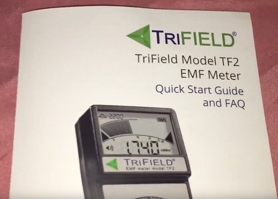
So that’s my review of the Trifield TF2, it’s a great meter for measuring magnetic fields.
It’s an okay meter for measuring electric fields but if you want to measure radio frequency radiation this meter is not my first choice.

